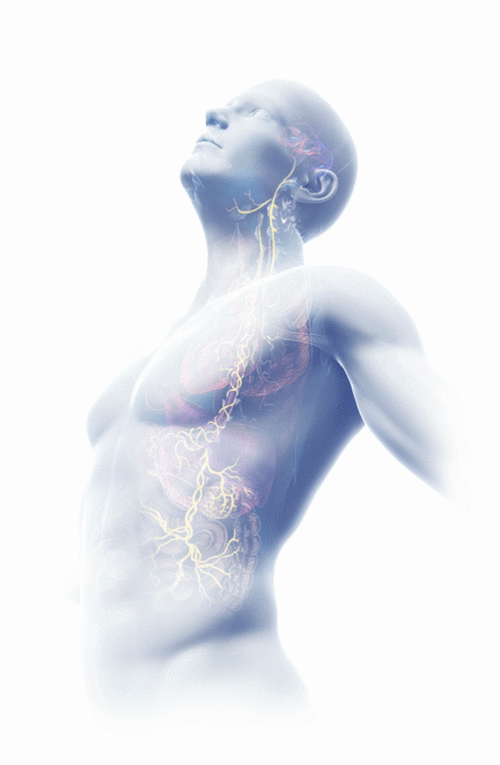
.jpeg)
.jpeg)

Global/China/Japan/Uk/Us
HOCIT GROUP
Eye-catching AI company・AI venture IT master HOCIT GROUP
Message from industry leader
Global/China/Japan/Uk/Us
HOCIT GROUP
Eye-catching AI company・AI venture IT master HOCIT GROUP
Message from industry leader
Global/China/Japan/Uk/Us
HOCIT GROUP
Eye-catching AI company・AI venture IT master HOCIT GROUP
Message from industry leader

Global/China/Japan/Uk/Us/Canada
HOCIT GROUP
HOCIntelligentTechnology
哈牛桥智能科技集团
HOCインテリジェントテクノロジー(株)
Japan-China Trade & Promotion Artificial Intelligence Deep Learning Association
Eye-catching AI company・AI venture IT master HOCIT GROUP
Message from industry leader.High-tech enterprise




.jpeg)




DX:Digital Transformation
AI IOT 5G Cloud
.jpeg)




Harvard University, Oxford University
Cambridge University
, MIT University




















HOCIntelligentTechnology
哈牛桥智能科技集团
HOCインテリジェントテクノロジー(株)
普通法人协会日中贸易促进人工智能深度学习协会
一般社団法人日中貿易振興人工知能ディープラーニング協会
Japan-China Trade & Promotion Artificial Intelligence Deep Learning Association
Eye-catching AI company・AI venture IT master HOCIT GROUP
Message from industry leader .High-tech enterprise
STOP COVID-19 × AI, IoT, Internet of Things, RPA, OCR-AI, ERP, cloud, bigdata, blockchain, ICT, 5G, 3D, AR, VR, iCLIP, core industrial software, smart chips, smart driving, core algorithms, neutrinos, quantum Top cutting-edge Technology Pioneering the future in an environment where the latest technologies and products are involvedEducation/Medical/Healthcare/Finance/Sports/Security/autonomous/Robot/IOT/ICT/Smart Manufacturing/Smart Transportation/Smart City/Smart Home/Smart Logistics/AI Real Estate/AI Marketing/AI Advertising/AI Agriculture and other fields





Top 10 scientists worldwide in ours Team
Among them, the familiar statistical machine learning man Michael I. Jordan ranked 4th, and the deep learning gods and the 2018 Turing Award winners Geoffrey Hinton and Yoshua Bengio ranked 9th and 10th respectively.
In addition, there are two Chinese scholars among the top 10 computer scientists, namely Jiawei Han, professor of computer science at the University of Illinois at Urbana-Champaign, and Philip S. Yu, professor of information technology at the University of Illinois at Chicago.

.jpeg)





.jpeg)







.jpeg)



























.jpg)
.jpg)

.jpg)









































.jpeg)



.jpeg)



The new coronavirus infectious disease "COVID-19" that is raging all over the world. Not only is it a health hazard to humans, but it is also seriously damaging society and the economy as a whole. What should the world economy aim to revive from here?
In this special issue, we interviewed leading industry representatives in each industry and explored the impact of the coronavirus on the industry, structural reforms to be made, and the path to hope ahead of corona. ..




.jpeg)






.jpg)












.jpg)







.jpeg)









Leading company's digital transformation 【DX Business Consultant Service Consultant Industry Leader
[IT engineer] Inexperienced OK! There is customer resident, system development for contract projects 100%, in-house development
In-house product development industry leader
.jpeg)






_%E3%83%9A%E3%83%BC%E3%82%B8_1.jpg)













.jpeg)










HOCIT GROUP
HOCIntelligentTechnology
哈牛桥智能科技集团
HOCインテリジェントテクノロジー(株)
普通法人协会日中贸易促进人工智能深度学习协会
一般社団法人日中貿易振興人工知能ディープラーニング協会
Japan-China Trade & Promotion Artificial Intelligence Deep Learning Association
Eye-catching AI company・AI venture IT master HOCIT GROUP
Message from industry leader
STOP COVID-19 × AI, IoT, Internet of Things, RPA, OCR-AI, ERP, cloud, bigdata, blockchain, ICT, 5G, 3D, AR, VR, iCLIP, core industrial software, smart chips, smart driving, core algorithms, neutrinos, quantum Top cutting-edge Technology. Pioneering the future in an environment where the latest technologies and products are involvedEducation/Medical/Healthcare/Finance/Sports/Security/autonomous/Robot/IOT/ICT/Smart Manufacturing/Smart Transportation/Smart City/Smart Home/Smart Logistics/AI Real Estate/AI Marketing/AI Advertising/AI Agriculture and other fields



.jpeg)





















.jpg)










































.jpeg)





.jpeg)
The consciousness of Harvard University, Oxford University, Cambridge University is the leading research and academic field of Harvard University, Oxford University, Cambridge University. The research and development team has more than 380 people. ERP consulting, artificial intelligence computer vision, natural language processing technology, data mining advanced data analysis , Cross-media analysis and reasoning technology, intelligent adaptive learning technology, swarm intelligence technology, autonomous unmanned technology, smart chip technology, brain-computer interface technology and other high-tech cutting-edge technologies in security, finance, retail, transportation, education, medical care, manufacturing, health Leading technology

.jpg)









DX:Digital Transformation
AI IOT 5G Cloud









Our mission is to increase
the GDP of the internet
Stripe is a technology company that builds economic infrastructure for the internet. Businesses of every size—from new startups to public companies—use our software to accept payments and manage their businesses online.
Our mission is to increase
the GDP of the internet
Stripe is a technology company that builds economic infrastructure for the internet. Businesses of every size—from new startups to public companies—use our software to accept payments and manage their businesses online.
Stripe is a technology company that builds economic infrastructure for the internet. Businesses of every size—from new startups to public companies—use our software to accept payments and manage their businesses online.












.jpeg)

AI×healthy


Kiyooka University,
University of Tokyo






California Institute of Technology University
.jpeg)





Top 10 scientists worldwide in ours Team
Among them, the familiar statistical machine learning man Michael I. Jordan ranked 4th, and the deep learning gods and the 2018 Turing Award winners Geoffrey Hinton and Yoshua Bengio ranked 9th and 10th respectively.
In addition, there are two Chinese scholars among the top 10 computer scientists, namely Jiawei Han, professor of computer science at the University of Illinois at Urbana-Champaign, and Philip S. Yu, professor of information technology at the University of Illinois at Chicago.
With the world's leading AI, IoT, RPA, OCR-AI, ERP consulting, cloud, bigdata, blockchain, ICT, 5G, 3D, AR, VR, iCLIP, aviation design software, core industrial software, core algorithms, China Micro Top core technologies such as quantum computing, artificial intelligence, smart driving, smart chips, edge computing technology, robotics and automation systems, smart phones and cloud computing, smart cities, etc. These core technologies all come from independent research and development and have independent intellectual property rights. Actively advocate sunshine and health
The corporate values of the business philosophy, compliance with applicable laws and regulations, product technologies are widely used in smart chips, education, healthcare, finance, sports, security, new retail, unmanned driving, robots, IOT, ICT, smart manufacturing, smart transportation, smart cities , Smart home, smart management, RPA, smart factory, smart logistics, AI real estate, AI marketing, AI advertising, AI agriculture and other social inclusive fields
OUR TEAM
Harvard University, Oxford University Cambridge University, MIT University, California Institute of Technology University, Tsinghua University, Tokyo University, Kyoto University, Beijing University, Stanford University Zhejiang University, Tohoku University Hong Kong, Osaka University National University of Singapore, University of Science and Technology of China Seoul University PhD composition of Fudan University






_%E3%83%9A%E3%83%BC%E3%82%B8_2.jpg)
_%E3%83%9A%E3%83%BC%E3%82%B8_1.jpg)







.jpg)

















.jpg)


















.jpg)













Kyoto University,
Beijing University
Increased demand due to corona damage!
In system thinking
Create business,
A new service is born!















Stanford University






Zhejiang University,
Northeastern University





With a full remote team Prove the power of design,STOP COVID-19 × AI, IoT, Internet of Things, RPA, OCR-AI, ERP, cloud, bigdata, blockchain, ICT, 5G, 3D, AR, VR, iCLIP, core industrial software, smart chips, smart driving, core algorithms, neutrinos, quantum Top cutting-edge Technology
Bring the power of technology-driven design,AI, IoT。。。Top cutting-edge Technology
teams to your projects













STOP COVID-19 × AI, IoT, Internet of Things, RPA, OCR-AI, ERP, cloud, bigdata, blockchain, ICT, 5G, 3D, AR, VR, iCLIP, core industrial software, smart chips, smart driving, core algorithms, neutrinos, quantum Top cutting-edge Technology. Pioneering the future in an environment where the latest technologies and products are involvedEducation/Medical/Healthcare/Finance/Sports/Security/autonomous/Robot/IOT/ICT/Smart Manufacturing/Smart Transportation/Smart City/Smart Home/Smart Logistics/AI Real Estate/AI Marketing/AI Advertising/AI Agriculture and other fields








Hong KongUniversity, Osaka University
National University of Singapore,
University of Science and Technology of China
Seoul University Fudan University
Kyoto University,
Beijing University






.png)








.jpg)

.jpg)









.jpeg)



.jpg)

Media
https://www.jcdla.org
Smart City
Smart Transportation









.png)












.jpg)






































